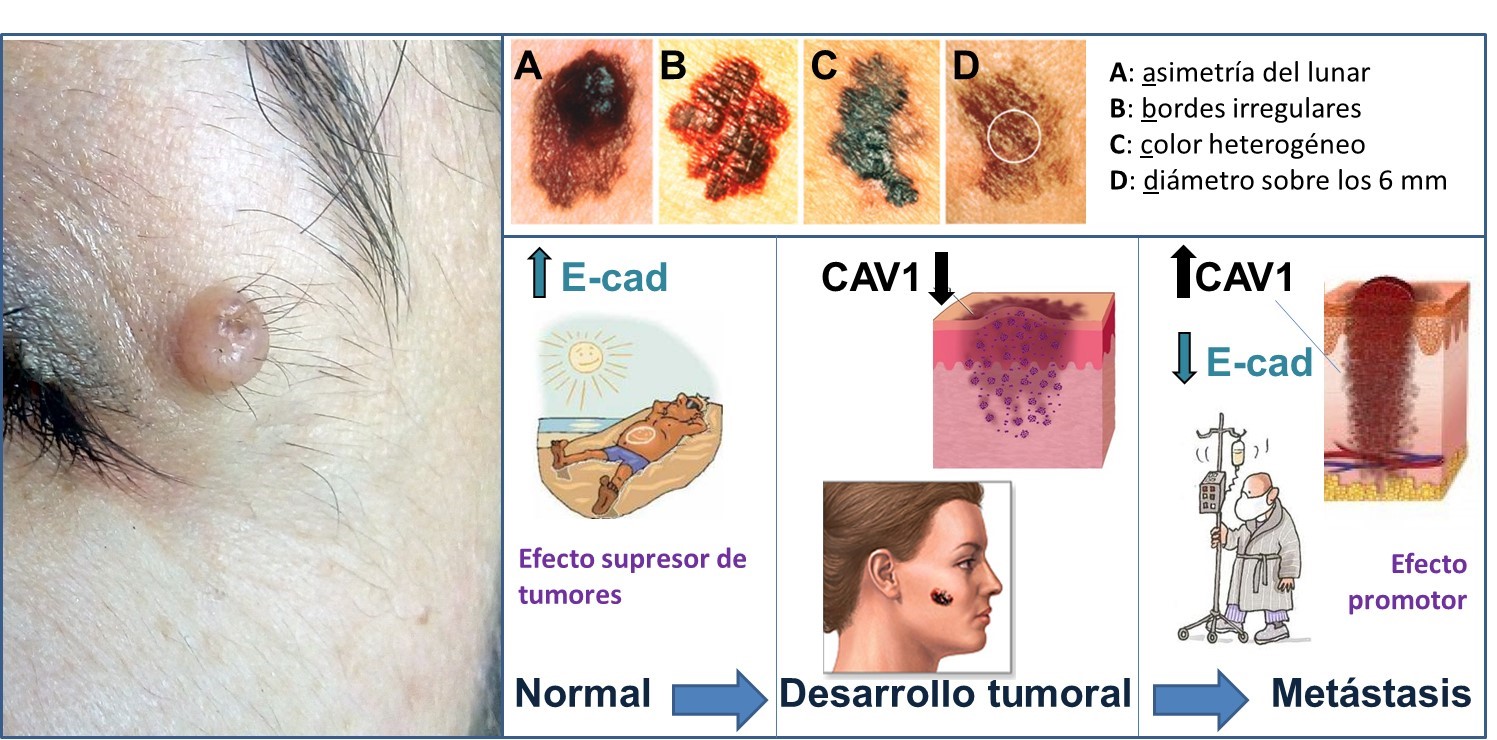Melanoma: it not fooled that lunar, It could be cancer

Melanoma is a malignant tumor that develops from pigmented skin cells, Although sometimes may also occur at eye level and bowel. On May 23 was celebrated the world day of Melanoma, day which aims to raise awareness about the importance of the prevention of this disease.
It is a cancer of low frequency, has been an increase in the population, both in Chile and in other places, especially, in United States, Australia, Europe and the Nordic Nations.
As explained in the Guide to medical canceronline.cl, the aggressiveness of the disease is high, with a mortality rate of between 10% to 20% of the affected population, explains Lorraine wolves Gonzalez, research associate at the Center for advanced chronic diseases (ACCDiS ) and PhD in Biochemistry from the University of Chile.
However, the same document says that when detected in the early stages, This can have a very good prognosis, with improvement of around 85% of the patients with simple surgical removal.
Key factors of incidence, indicates wolves, are they related to the deterioration of the ozone layer and increased exposure to the Sun's rays. Situation that can be seen most frequently in the area south of Chile. In fact, says, "in Antarctica it detected in the population of penguins atypical proliferation in your skin, that would correspond to melanoma".
In addition, the use of solarium, freckles excess or very white skins, they are factors that predispose people to have this problem. But in addition, warns wolves, "there is a lack of information, concern and care - as the custom of not using sunscreen -, which in turn explains why many patients arrive with this cancer at an advanced stage, When the situation is more complicated".
Melanoma is the most aggressive skin cancer that exists. In Chile, affects approximately 2,2% per 100 thousand inhabitants. Clinical diagnosis is due to the observation of moles that begin to evolve, indicates wolves. Hence the nomenclature of "ABCD of melanoma", that you aware of changes occurring in the lunar and which demonstrate a cancer: A: the lunar asymmetry, B: jagged edges, C: heterogeneous color and D: about 6 mm diameter (Figure 1).
By way of Council, highlights wolves, It is important to note the example of the lunar in Figure 1. "Many patients who have moles do not consult a dermatologist until the tissue is already very transforming, that is why we send the message to evaluate how changing a mole, observe your outline, height, color and edges. If some of these characteristics change, It is better to evaluate a clinical specialist".
Caveolin
The presence of a protein in the body, called Caveolin, it fulfills a dual role in the development of cancer, indicates wolves. This means, that in the early stages it can act as suppressor of tumors, While States advanced, as a promoter of metastasis (see Figure 1).
The relevance of the Caveolin, is a finding of a research, fruit of five years of study of wolves, and published in the international journal Pigment Cell and Melanoma Research.
"This article opened our research to an unknown world, where melanoma tumor cell manages to keep you connected to your environment, in order to transform this environment and build a nest, where a tumor cell can walk and continue playing", designates wolves. Their results open the way to explore new therapies against cancer in a Murine model (Special strains of mice), very similar to what would happen in a human.
Wolves know that while it is difficult to talk about a 'cure' against this evil, Thanks to these discoveries, is expected to be able to modulate the presence of Caveolin resective surgery when, i.e., When the tumor is extracted. "From that moment, would be expected that the medical strategy manages to slow down the development of metastasis. This concern is not less, Since Melanoma is a highly invasive cancer. About 20% of the population that suffers from it it dies, "documents the scientific guide Canceronline.cl".
Key proteins
The development of cancers is, in general, a very slow process. It may take 20 to 30 years, explains wolves, period in which various and subtle changes at the cellular level will is generated which, At last, associated the appearance of tumors.
In this context, Research of the past years have been directed to the search for genes that act as suppressors or oncogenes, "and at the same time, the discovery of strategies that allow to inhibit the latter, and on the contrary, help promote those 'guardians', that you suppress tumors", clarifies.
However, Research has also shown that there are genes and proteins as Caveolin that can change its function depending on the context; designates wolves, specifically the tumor environment and the protein complexes that are associated with.
The above, represents, explains wolves, a fundamental change in the way of understanding the processes that lead to the development of cancer, and therefore also in how to treat the disease. "So, in the case of melanoma, our research group described the suppressor function of Caveolin tumors, It required the presence of another protein, call Ecaderina".
In the experiments, the team has been observed that when the two proteins are together, excision of tumors is very powerful, designates wolves, "because simply they do not grow and", then, the survival of mice is to put it: eternal".
Under this idea, indicates, you might think to develop therapies that allow the co-expression of these elements. That way, with the help of molecular biology "pieces of DNA you could manipulate, giving the tumor cells of the E-cadherin protein sequence, with the idea of abolishing the promoting effect of metastasis of Caveolin-1, and analyze the results on live models", holds.
The hypothesis of the beneficial union between both proteins, It is also supported in studies where it has been found that Ecaderina vanishes in States of advanced cancer and metastasis. In the same way, its existence in the early stages has been, where would act as suppressant, in conjunction with Caveolin. These results would be a step forward, to test different treatments.
"Another positive aspect of the studies is that you search of the role of Caveolin", It has also derived from other types of cancer cell lines, as colon and breast cancer, showing the same dual role for Caveolin", says wolves.
The most important thing is that to achieve good therapeutic results, the road is long, clarifies, It is essential that there is a balance and effective functionality of these proteins, because they do not behave the same way in all patients and types of cancer. "Is for this reason that our research group is multidisciplinary and strives every day to search for an answer", indicates.

